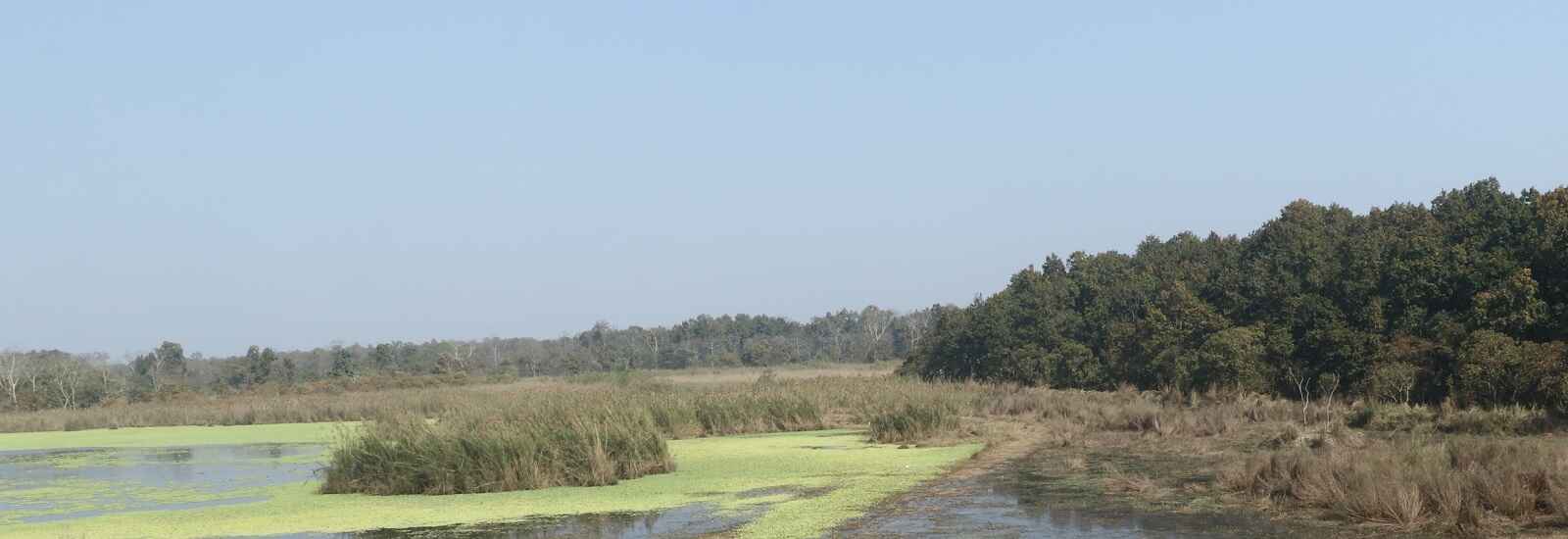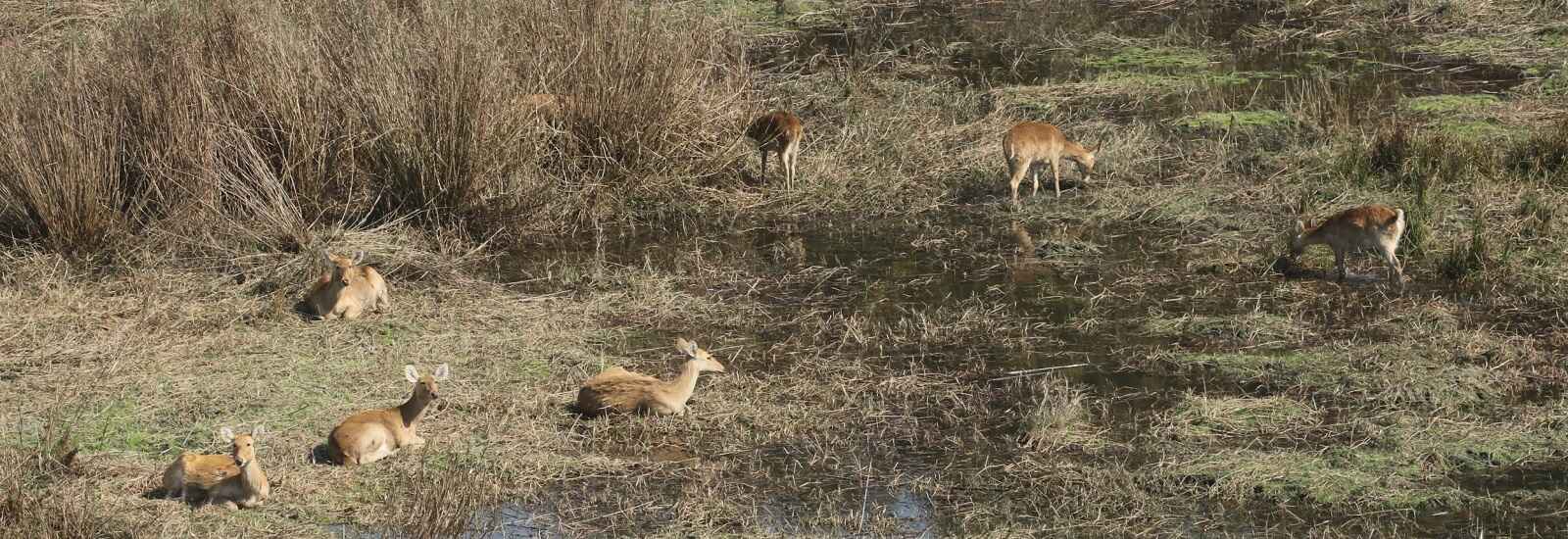 |
Wind Speed: 5.4 km/h
|
Humidity: 59%
|
AQI: PM2.5 - 73.75 &
PM10 - 74.65
|
Wind Speed: 5.4 km/h
|
Humidity: 59%
|
AQI: PM2.5 - 73.75 &
PM10 - 74.65 

Explore Jhand Tal At Pilibhit Tiger Reserve
Jhand Tal Pilibhit Tiger Reserve is a beautiful place for wildlife
Secluded on the edges of the Mahof and Barahi ranges within the green belt of the Pilibhit Tiger Reserve, a serene yet gorgeous water body, Jhand Tal serves ecological, historical, and wildlife purposes. One of the man-made tal (ponds), it was originally constructed under the Genda (Rhino) Conservation project, and presently, it plays an important role in sustaining the neighboring ecosystem of the reserve.
The name Jhand Tal was derived from the two words in Hindi, which are Jhad Jhankad, meaning the dense bushes and entangled vegetation that used to enclose the pond. These dense natural obstacles made the water body a mysterious and wildly attractive place that animals loved to use as cover, particularly during the hotter period when water was a very important life source.
First, constructed to assist the Indian rhinoceros project, Jhand Tal served as a safe and plentiful place of water and grazing land for the reintroduced rhinoceros population. Though rhinos are not usually seen anymore in this region, the memory of the project has not yet been forgotten in this culture of conservation.
Jhand Tal is most commonly visited today as a part of a safari in the Pilibhit Tiger Reserve (mostly in the Barahi range). Many tourists and wildlife lovers tend to visit this place due to the beautiful landscape, bird watching, and wildlife spotting. The calm waters of the tal that are caressed with tall grasses and forest make the tal reflective, thus making its natural beauty even more than what it already was, at least at sunrise or sunset.

Discover Jhand Tal inside Pilibhit Tiger Reserve
Here one can see spotted deer, barasingha (swamp deer), wild boars, jackals, and sometimes, leopards and tigers can be seen around this tal. This is explained by the fact that it is situated at the edge of two active forest ranges and thereby serves as a meeting point of animals that want to move between territories. Jhand Tal is even more important to the survival of the wildlife during the dry season.
Bird watching is one of the most pleasant activities here. The pond is also inhabited by a great variety of resident, as well as migratory birds, such as kingfishers, egrets, herons, storks, and even, in a few cases, falcons and owls. The vegetation around the tal forms a perfect nesting site and shelter to a variety of species of avians, which makes it a dream ratio-paradise to any lover of birds.
The tourist wishing to visit Jhand Tal can access it on guided safaris, which may be booked at Pilibhit Tiger Reserve, preferably on Madhotanda or Chuka eco-tourism zone. To make it even more entertaining, the staff presents forest guides in the reserve that are trained to identify wildlife and explain the ecological importance of such places.
The management around the Pilibhit Tiger Reserve has taken up Eco-tourism activities, which have secured and conserved Jhand Tal. The park is controlled effectively so that there is minimal human intrusion and limited human access to the area in the form of tourists, so that the natural eco-balance in the ecosystem is maintained.
To sum up, Jhand Tal cannot be seen simply as a waterbody; it is merely the living evidence of the conservation story of Pilibhit. More of a wildlife photographer, a bird watcher, or simply someone in need to get in touch with the tranquillity of nature, Jhand Tal has raw and unexplored Terai wildlife to offer.





 How To Reach At PTR
How To Reach At PTR
